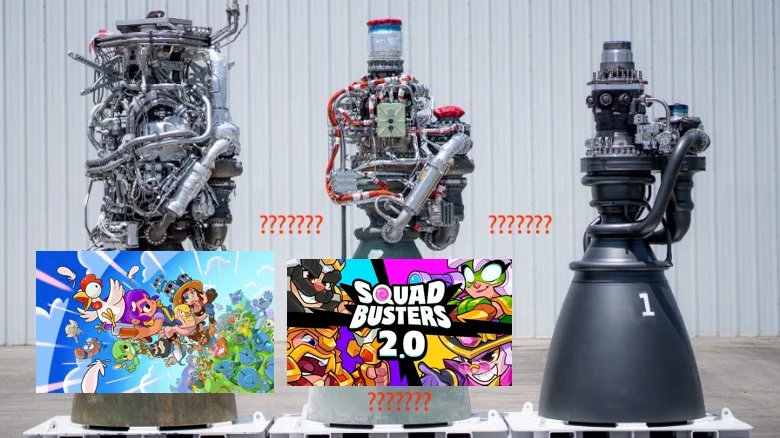Squad Busters 2.0 & SpaceX’s Raptor 3 Engine

Squad Busters’ original thesis has been falsified. What once seemed like KPI paradise: hypercasual-esque core, aggregating Supercell’s beloved IPs à la Super Smash Bros., and infinite consumable-based monetization with zero marginal cost, is now unrecognizable. I was brought in, and called it the game with Supercell’s biggest ceiling! Yet, just a year later, the hypercasual core has vanished, giving way to multiple player-activated abilities and completely removing consumables. Squad Buster 2.0 attempts to simplify nagging launch criticisms, including combat readability, character UX, progression speed, agency out-of-round with unit selection, and agency in-round with abilities. It gets halfway there, but in solving some issues, surfaces others.
The original mechanics captured contemporary design zeitgeist: merging, star systems, in-round progression and economy, roguelike, consumables, hero collections, and mods. It’s a system designer’s dream, but it’s spun the game into a series of interlocking parts. It lacked the iterative clarity evident in SpaceX’s Raptor 3 engine (see below), illustrating the ideal design process of stripping complexity to reveal elegant simplicity. While 2.0 reaches for this goal, intertwined elements complicate straightforward refinement.
For example, stomping out an opposing player is easier: simply kill the hero unit. But this means opposing squads sit their squad atop yours, negating the reduction in total units to help combat readability. The two new units spawn with Hero units, helping speed up in-round progression, meaning faster combat, but also a more frenzied reminder that the game lacks any comeback mechanics. “Squaddie” UX is far simpler: opening an in-round chest emphasizes the single ability addition of the character to the squad. Yet, this reminds players how mundane abilities are, with few conditional passives, limiting how squad choice in-round finally changes strategic gameplay. Theory crafting remains a sore spot, particularly for a game about amassing roguelike abilities.
Squad Busters languishes beneath Supercell’s smallest title, Hay Day, and the gap widens. Last week, Hay Day generated $4.4M, while Squad Busters came off as a rounding error at $.4M. Its survival hinges less on issues like monetization or retention, and more fundamentally on a core something worth saving.
Squad Busters was set to catapult Supercell into a record-breaking year and trailblaze the path toward an IPO. Instead, it’s fought for its life, becoming a litmus test for Supercell’s Next Chapter. Weakness hides in numbers, and as Supercell scales and vested interests around resourcing increase, killing live games with a funeral and champagne (actually) becomes more fraught. Ultimately, Squad Busters 2.0 finds a clearer identity but fails to prove it’s a compelling identity.